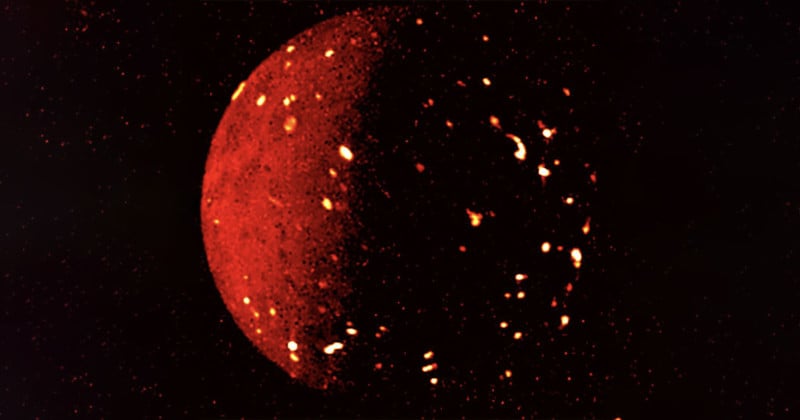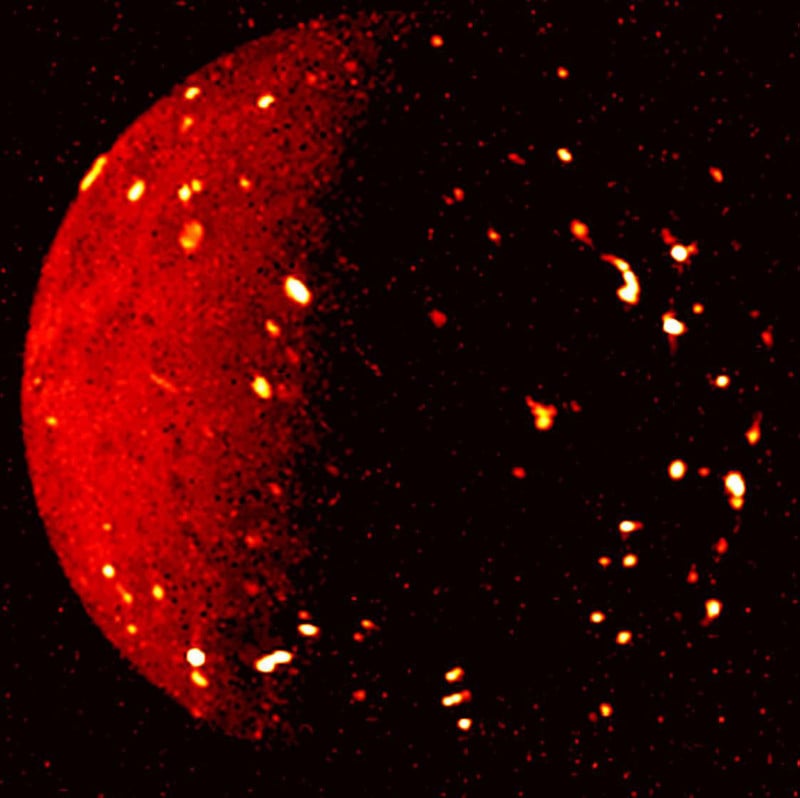NASA Releases Photo of Fiery Lava Lakes on Jupiter’s Moon Io

NASA has released a stunning photo of fiery lava lakes glowing brightly on the surface of Io, one of Jupiter’s moons.
The Juno spacecraft captured the image of Jupiter’s volcanic moon back in July but the space agency released the image last week (Wednesday, December 14).
The photo is an infrared image delivered from data collected by the Jovian Infrared Auroral Mapper (JIRAM) instrument attached to Juno.
In the image, glowing red marks adorn the surface of Io. The brighter the color, the higher the temperature recorded by JIRAM.
Juno captured the infrared view on July 5 when the spacecraft was roughly 50,000 miles (80,000 kilometers) away.

Io (pronounced eye-oh) is home to hundreds of volcanoes. Surprisingly, NASA researchers found more volcanic spots in the polar region than in the planet’s equatorial region.
JunoCam
Originally, Juno’s mission was to investigate Jupiter but its mission was extended and expanded to include three of the four Galilean satellites and the gas giant’s rings.
One of the giant planet’s moons, Europa, is of particular interest to scientists because they firmly believe that below the thick icy surface is a salty ocean that could harbor life.
A recent flyby revealed a detailed view of Europa’s icy surface which is covered in scratches and fractures.
Over the years, NASA’s Juno probe has captured some of the most beautiful photos of Jupiter (see below) which it has been orbiting since 2016.
![]()
On board, JunoCam is a visible-light camera with a field of view of 58 degrees and has four filters; red, green, and, blue, that filter visible light. While the fourth filter, a methane band, provides color imaging.
The Juno mission never intended to inspect Jupiter’s moons and only came about after NASA got an unexpected 42 extra passes of Jupiter which threw up an opportunity to snatch close glimpses of Jupiter’s moons.
“It was fortuitous, as we transitioned to our extended mission, that we were able to do close flybys… of the moons,” says Scott Bolton, a planetary scientist at the Southwest Research Institute in San Antonio and principal investigator of NASA’s Juno mission, at a press conference last week.
Image credits:Image credit: NASA/JPL-Caltech/SwRI/ASI/INAF/JIRAM.